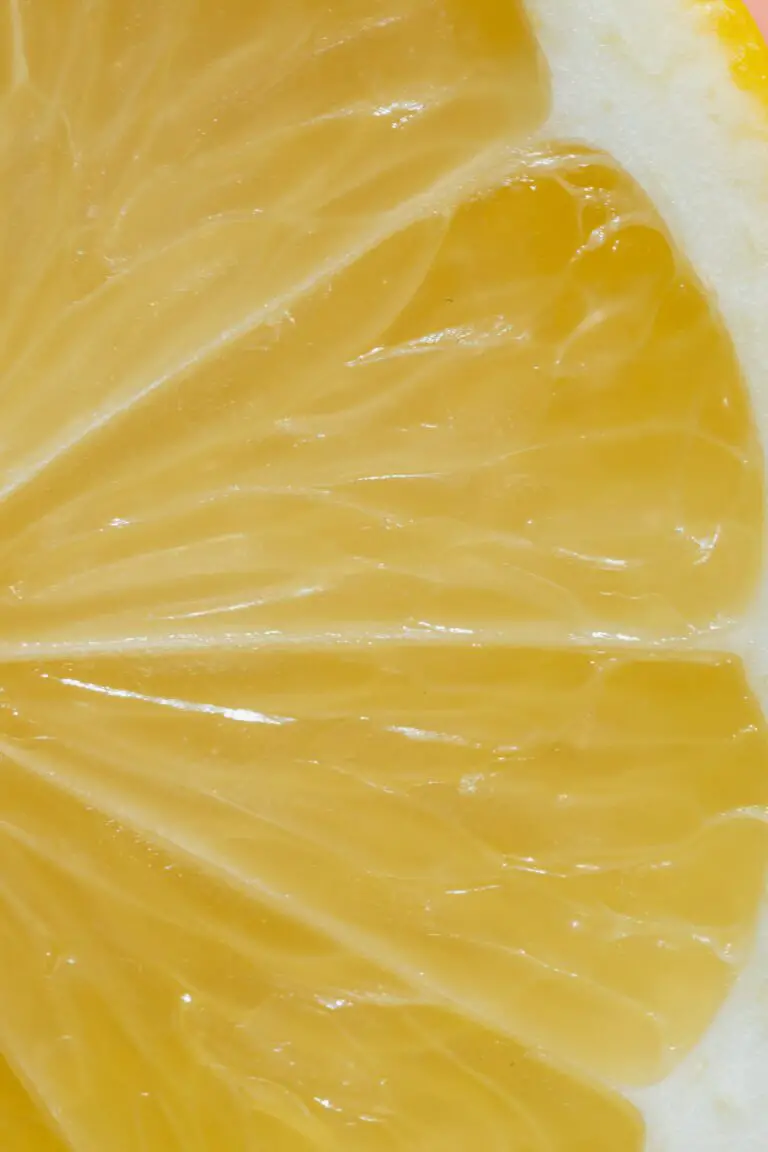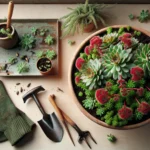Introduction to Lemon Ball Sedum
Welcome to a bright corner of the succulent world, where the Lemon Ball Sedum, scientifically known as Sedum rupestre ‘Lemon Ball’, radiates vibrant energy. This perennial plant, a true visual delight, is celebrated for its electrifying chartreuse foliage that adds a pop of color to any succulent collection or garden patch.
Imagine a sunny day in your garden, where the Lemon Ball Sedum sits like a cluster of little suns, basking in the glory of daylight. Its plump, needle-like leaves cascade beautifully over the edges of pots and rockeries, creating a soft yet striking visual. Not to mention, its ability to withstand some neglect, making it a dream for both veteran gardeners and those just dipping their toes into the world of succulents.
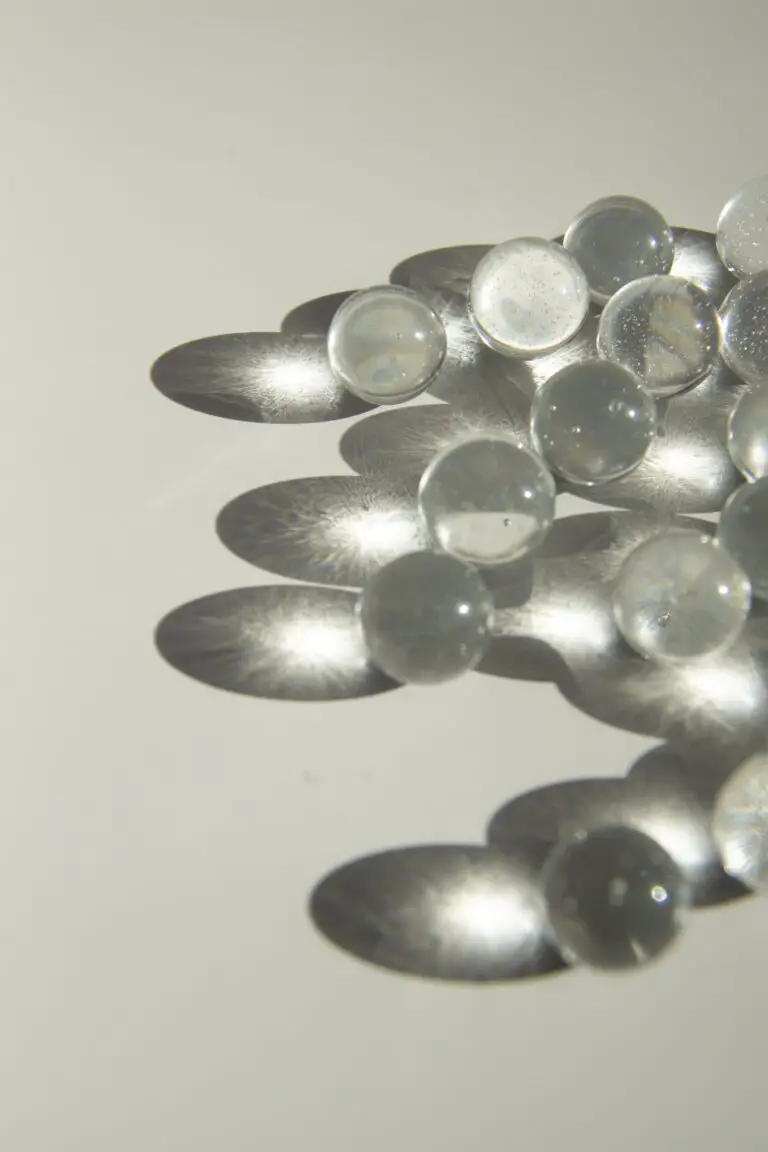
People often wonder about this succulent’s tenacity. Not only does it keep its dazzling color through the seasons, but it is also drought-resistant and quite undemanding in terms of care. A visit to this resource shows just how easy it is to maintain the vivacious Lemon Ball Sedum, requiring nothing more than some sunshine and occasional water.
If you’re curious about creating your own succulent sanctuary, look no further than our guide to indoor succulent plants. It’s packed with essential tips on care, maintenance, and aesthetics to help your Lemon Ball Sedum, and its other succulent companions, thrive in any setting.
The allure of the Lemon Ball Sedum is undeniable—it’s like having a piece of the sun captured in leaves, ready to brighten both your garden and your spirit.
Characterizing the Lemon Ball Sedum
Behold the Lemon Ball Sedum, a symphony of zest and vigor, just waiting to spritz up your garden spaces with its lively lemony hue! What gives this hardy plant the panache is its dense clusters of fleshy leaves, which are imbued with a vibrant yellow-green pigment that boldly retains its luster through various seasons. Imagine these bright succulent globes dotting your rockery or spilling over the edges of a minimalist container—nature’s very own splash of effervescent lemonade!

Texture too plays a starring role in the appeal of this Sedum variety. Each leaf is plump and succulent, with leaves that beckon the touch; a tactile invitation to explore the firm yet yielding surface. It’s a stunning complement to the smooth, polished stones of a garden pathway or the rough, organic outlines of driftwood decor.
Let’s talk tenacity—Lemon Ball Sedum laughs in the face of scorching suns and shivers not at the touch of frost, boasting an impressive range in hardiness zones from 3 through 9. It’s a versatile crusader in the succulent kingdom, eagerly conquering terrain from the humid climes of the South to the more temperate Northern latitudes.
Commonly found punctuating the xeriscaped tableau or breathing life into a rock garden, Lemon Ball Sedum’s cascading growth habit is also a landscape artist’s dream. Not only is it a feast for the eyes, but this plant is effortless to maintain. Revel in a gardening experience that marries the captivating beauty of this sedum with the joy of simplicity, as you unearth the secrets of succulent care and witness the unfurling of its allure season after season.
Whether you’re a seasoned gardener or a curious onlooker, the Lemon Ball Sedum is a luminous treasure to discover. With its easy-going nature and its resilient, yet delicate appearance, it is a testament to the enchanting diversity packed within the world of succulents.
Cultivating Your Sedum Success
Welcome to the vibrant world of Lemon Ball Sedum, a succulent that captures the essence of sunlight in its foliage! This effervescent plant is not only a feast for the eyes but also a breeze to grow, making it perfect for green thumbs and beginners alike. Let’s dive into the ins and outs of nurturing these radiant beauties to their fullest potential.
Perfect Soil: The Foundation for Growth
As with any great tale of flourishing flora, it begins with the soil. Lemon Ball Sedum thrives in well-draining, sandy, or gravelly soil that emulates its native, rocky habitats. If you’re potting these succulents, consider a commercial cactus mix or create your own blend by mixing coarse sand and standard potting soil in equal parts. Remember, the goal is to prevent water from lingering too long, as soggy conditions are the arch-nemesis of succulents!
Bathing in Sunshine: Ideal Sun Exposure
Imagine a lazy sunbath by the beach – your Lemon Ball Sedum craves that same sun-kissed luxury. Situate your plant in a spot where it receives at least 6 hours of direct sunlight daily. If it’s indoors, a south or west-facing window is your golden ticket. The more light these lemony globes absorb, the more vibrant their hue becomes. Just be mindful of the intense midday sun in the peak summer months, which can sometimes cause a bit of sunburn to these otherwise sun-loving plants.
If you’re looking for visual cues on lighting, check out this detailed video showcasing how the right amount of sunshine can make a world of difference for your sedum’s well-being.
Hydration Hacks: Watering Practices
When it comes to watering, the Lemon Ball Sedum likes to play it cool, preferring a drink only when the soil has completely dried out from the last watering. Overwatering can unleash a host of issues, from root rot to a lackluster appearance. A good rule of thumb is to water thoroughly but infrequently, allowing excess water to drain away freely.
Nourishment Know-how: Fertilization Fundamentals
Feeding your Lemon Ball Sedum doesn’t need to be an elaborate affair. Fertilization is like the occasional sprinkle of seasoning on a gourmet dish—it’s all about enhancing what’s already there. Offer a balanced, water-soluble fertilizer diluted to half its strength at the onset of the growing season in spring. Repeat this light meal monthly until the autumn whispers signal the end of the growth period.
For more insights on how to make these succulents truly thrive, check out our tips on succulent soil for successful plant growth—a delightful read for any plant enthusiast.
The journey to growing the plump and playful Lemon Ball Sedum is one of joy and simplicity. With the right conditions, these succulents will reward you with a cascade of zesty foliage that brings life to any space. Keep the soil loose, the sun bright, the water in check, and the nutrients balanced, then sit back and watch these lemony orbs of delight blossom under your care.
Propagation Like a Pro
For those enchanted by the sun-kissed hue and plump, clustered foliage of lemon ball sedum, multiplying your vibrant collection is within reach through the wonders of propagation. As though plucking a leaf from a storybook, you can harness the magic of nature to create an entire lush landscape from just a segment of these hardy succulents.
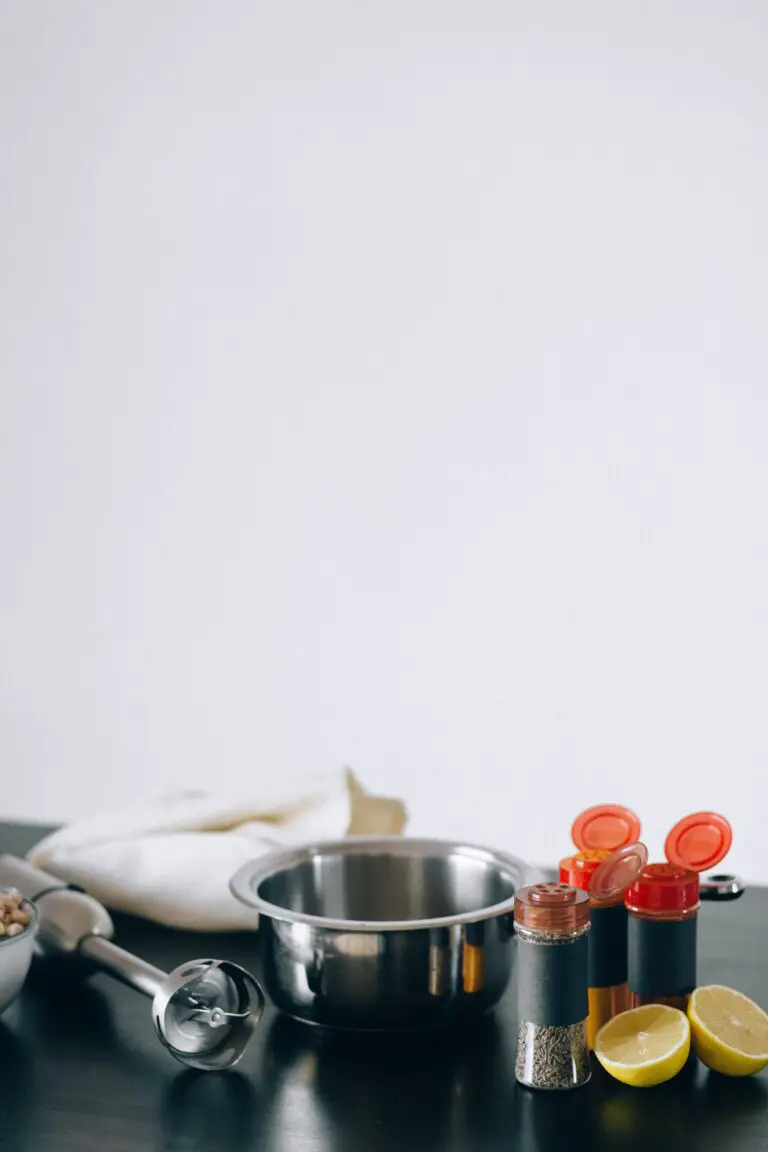
Brewing life from a piece of another feels like a gardener’s alchemy, and it’s a straightforward process with lemon ball sedum. You can start by simply snipping off a non-flowering stem or plucking a few leaves—making sure each piece has a fair share of the plant’s inherent spiritedness. If a full stem feels like too great a leap for beginner green thumbs, fret not; even a single leaf holds the potential for growth.
Cultivating New Growth from Cuttings
A stem cutting is the proverbial magic wand in this growth-spurring incantation. Slice a 2- to 3-inch piece from the healthy, lively upper parts of the plant. With the gentlest touch, remove the lower leaves to reveal a bare stem, which will, in time, give rise to roots eager to delve into the soil. Lay the cutting on a dry surface for a few days until a callous forms, doing so will weave a protective spell against rot when planted.
When ready, nestle your stem cutting into well-draining soil, just barely grazing the surface. Sunlight is the final ingredient; dappled light is ideal, simulating conditions under which this charmer naturally thrives. Water sparingly, for their fleshy leaves store ample moisture. With patience fitting for a botanical sage, watch as roots take hold and new life unfurls.
Dividing for a Verdant Spread
If your lemon ball sedum has grown into a thriving clump, division might be the path you choose. The best time to embark on this venture is spring or early summer when growth is most vigorous, a testament to the sedum’s thirst for life and light.
With a clean, sharp cut, divide the plant at its base, ensuring that each section has a part of the crown and a healthy set of roots. Like sharing a piece of your favorite pie with a dear friend, you’re allowing a new cluster to establish its own foundation. Replant these sections into their new homes, cozy and sun-lit. Water them gently, encouraging them to awaken in their new abode with a burst of verdant energy.
Whether you choose cuttings or division, propagating lemon ball sedum is akin to turning over a new leaf, both literally and metaphorically. You are not just cultivating plants, but nurturing a continual cycle of rejuvenation and abundance.
Pests and Problems: Prevention Tips
Just like superheroes have their kryptonite, the Lemon Ball Sedum, with its sunshiny demeanor, has a few natural foes that can dull its radiance. While these succulents are like botanical tanks, armed against many garden pests, they’re not invincible. Let’s unmask some of the troublemakers and deploy strategies to keep your Lemon Ball Sedum safe and sound.
First on the watchlist are aphids, those tiny green critters with an appetite for sap. They often stage their invasion beneath the sedum’s leaves, sowing havoc stealthily. But before you go full detective, remember that aphids have a nemesis: ladybugs. Encouraging these spotted guardians in your garden can keep the aphid population in check. A simple yet effective sleuthing tip is to inspect your plants regularly, ready to dispatch organic soap sprays if unwanted guests crash the party.
Next, we have the mealybugs; think of them as the white-collar criminals of the insect world with their cottony disguise. They blend in deceptively, hatching plots against the health of your plants. Be alert to their powdery masquerade, and be ready to serve justice with a dab of alcohol on a cotton swab – a spot-on remedy to bid adieu to these pests.

Let’s not forget fungal foes like root rot and powdery mildew, the sneaky saboteurs that thrive in moisture. Root rot lurks within over-watered soils while powdery mildew casts a dusty film over leaves. The secret to foiling their plots? Balance. Ensure your Lemon Ball Sedum is planted with sharp drainage and that you’re not overzealous with the watering can. For powdery mildew, a gentle brush off with a mixture of baking soda and water solution could just be your winning strategy.
While these prevention tips might make you feel like the Sherlock Holmes of horticulture, never overlook the simple. Rotate your Lemon Ball Sedum’s pot for even sunlight, prune judiciously to promote air circulation, and be moderate with fertilizers. It’s these elementary practices that often form the best defense against pests and problems.
Remember, the vibrant life of your Lemon Ball Sedum lies in the palm of your hands. With vigilant eyes and some clever tactics, you’ll maintain the upper hand against these natural nuisances. So, keep your wits sharpened and your garden tools at the ready to ensure your succulents continue to thrive with zesty vigor.
Innovative Landscaping Ideas with Lemon Ball Sedum
If you’re on a quest to add a splash of color and intrigue to your garden, let’s unearth the potential of lemon ball sedum. This vibrant succulent isn’t just a pretty face; it’s a versatile green artist, ready to paint your outdoor space with strokes of yellow and green.
Imagine a rock garden, where the lemony hues break the monotony of gray and brown stones. Place this plucky plant in nooks and crannies to create a visual melody, harmonizing with the tranquil vibe of your garden. It’s not just about looks; these succulents are drought-tolerant troubadours, singing the song of low-water landscaping.
A Riot of Color in Container Gardening
Container gardening with lemon ball sedum offers an orchestra of options. Why not mix them with deep purples and blues of lavender or penstemon for a contrast that pops? Stand these sun-loving succulents in tall, slender containers to add a sense of height and drama to your patio or balcony.
Now, let’s talk vertical. Ever thought of a living wall? Here’s your chance to elevate your garden—literally. Fashion a tapestry of these succulents cascading down your wall, alongside a chorus of complementing plants. They’re like nature’s own artwork, perfect for creating that Instagram-worthy green space.
Groundcover That Steals the Show
Groundcover doesn’t have to be dull. With lemon ball sedum, you’re creating a carpet of vivid color that can brighten even the most shaded areas. Use it to edge pathways, turning a simple walk to your garden into a golden promenade. Or let it weave through stepping stones, adding whimsy and charm to your outdoor sanctuary.
Don’t underestimate its utility—this plant is not just pretty; it’s also an excellent weed suppressor. Plant them densely to choke out those garden invaders. A simple, yet effective, strategy to keep your garden neat and tidy.
Endless Possibilities with Companion Planting
Companion planting with lemon ball sedum opens a world of creative possibilities. The vibrant yellow meshes well with the silver foliage of nearby Dusty Miller or the rich reds of ‘Autumn Joy’ sedum. It’s about creating a kaleidoscope of color and texture.
Real-life examples abound where this succulent plays a starring role. From the slopes of urban terraces to the borders of quaint cottage gardens, lemon ball sedum consistently proves its worth as a reliable, year-round performer.
Now, let’s take inspiration from a visual feast of ideas. Here’s a video that showcases the versatility of succulents like lemon ball sedum in the garden:
Lemon ball sedum is truly a succulent for all seasons and reasons, whether you’ve got acres to spare or just a few pots on a city balcony. Its carefree growth habit and resilient nature make it an ideal choice for both novice gardeners and seasoned green thumbs alike. So why wait? It’s time to let your garden glow with the effervescent charm of this succulent superstar.
Companion Plants and Combinations
Discovering the perfect comrades for your lemon ball sedum is like finding the ideal teammates in a garden game of vibrancy and vitality. These succulents shine brightest when paired with companions that both contrast and complement their zesty lemon hue and plump, textural leaves. Let’s delve into the world of plant partnerships that will make your lemon ball sedum truly pop!
Sedum ‘Lemon Ball’ is like the sun in the garden, spilling its radiant light far and wide. Now, imagine pairing it with the dusky purples of Lavandula angustifolia (English lavender), creating a duo that speaks of morning skies flushed with the promise of dawn. Not only do these two differ in color, but lavender’s fine, linear foliage sets off the sedum’s round, chubby leaves wonderfully.
Nestle in some Salvia nemorosa ‘Caradonna’ alongside, and watch as their spiky, deep-blue flower stalks thrust upward, complementing the lemon ball’s mounding form with vertical drama. Envision a conversation between the crisp edges of salvia’s leaves and the softer, rolling terrain of sedum, each enhancing the other’s unique silhouette.
For a collage of textures, include the silvery fronds of Artemisia varieties like ‘Powis Castle’, whispering tales of delicacy next to the sedum’s robust appearance. And in this tapestry, scatter the feather-like whispers of Stipa tenuissima (Mexican feather grass)—their airy dance mingling with your sedum’s grounded nature.
Visualize a ground cover like Thymus vulgaris (common thyme), with its petite leaves and creeping habit, swathing the soil in a lush carpet that elevates the raised lemon ball figures to even greater prominence. Illustrate your garden scene with spots of thyme’s tiny purple flowers, and you have a living painting, brimming with texture and tone.
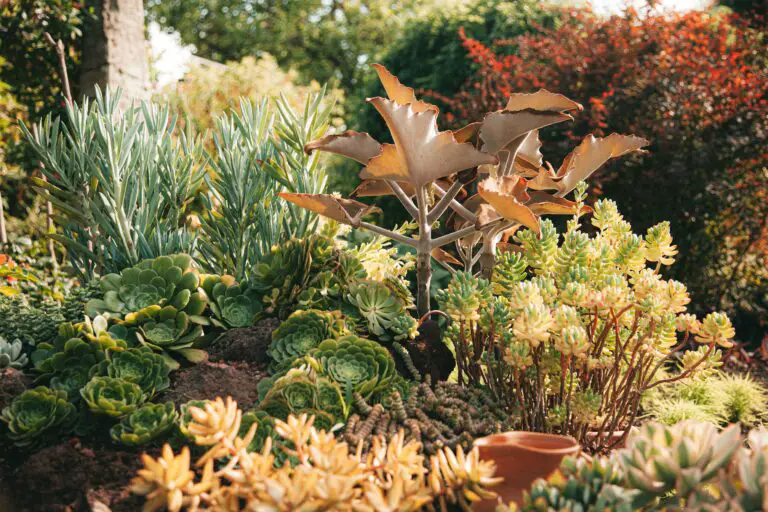
Now imagine a mingling of aromas; the lemony kiss of the sedum when brushed, the soothing scent of lavender calming the senses, all joined by the earthy fragrance of thyme. It’s a symphony of scents that not only enhances your garden’s ambiance but also invites pollinators to dabble amongst your plantings, bringing life and motion to the serene beauty you’ve created.
So dare to experiment with different plant combinations around your beloved lemon ball sedum. Each plant is a character, each leaf a story, and together, they weave an epic of horticultural harmony. The zest of the sedum, set amidst these chosen companions, ensures a garden space that is not only delightful to the eyes but also a feast for the soul.
Lemon Ball Sedum Unearthed: Thriving With Vibrant Succulents
Seasonal Care for Year-round Splendor
When it comes to the vivacious Lemon Ball Sedum, timing is everything. Just as a chef seasons a dish to perfection, so must a gardener seasonally tune the care for these radiant succulents. Let’s dig into the seasonal recipes that make the Lemon Ball Sedum not just survive but truly thrive all year long.
Spring ushers in a period of growth and rejuvenation for the Lemon Ball Sedum. As the frost retreats and the soil becomes workable, it’s the prime time to ensure your succulents are ready to burst into their lime-hued glory. Start by trimming any dead or damaged parts with surgical precision and provide a well-draining soil mix—a succulent’s best friend for preventing waterlogged roots.
As the mercury rises into the summer swelter, these sun-loving beauties bask in the glory of long, sunny days. However, too much of a good thing can lead to sunburns, even for plants. Position your succulents where they’ll receive a cocktail of morning sunshine and afternoon shade, ensuring they won’t be overwhelmed by the heat. And when it comes to watering, think of it as a steady drip-feed rather than a deluge—deep, infrequent soakings to encourage root resilience.

Autumn whispers the need for preparation as the Lemon Ball Sedum prepares for a cooler sojourn. This is your cue to scale back on watering, allowing the soil to dry thoroughly between drinks. It’s also the perfect season for propagation—snipping a sprig here and there to expand your succulent family or share with fellow green thumbs.
Winter care is akin to tucking your little green children into bed. These hardy succulents can stand up to the cold, but extreme chill or excess moisture can spell disaster. A blanket of mulch can help insulate the roots, and if you’re in particularly frost-prone zones, consider relocating pots to a sheltered area, or use frost cloth as a cozy, protective cocoon.
Through the circle of seasons, attentive caretakers of Lemon Ball Sedum are rewarded with a year-round display of jubilant, lemony spheres. Remember, like any good relationship, remaining attuned to the needs and subtle signals of your succulents is key to a long-lasting, verdant partnership.
The Environmental Benefits of Sedum
When it comes to Mother Nature’s masterpieces, Lemon Ball Sedum is a vibrant gem that not only adds a splash of color to your garden but also offers a treasure trove of environmental benefits. Let’s dig deeper into the perks of planting this tenacious succulent.
Drought Resistance: A Thirst-Quenching Success Story
Imagine a plant that thrives with minimal water, standing tall and radiant under the scorching sun. Lemon Ball Sedum is that plant, a drought-resistant warrior that laughs in the face of dry spells. This quality translates into water conservation, a vital practice especially in areas where every drop is precious. Homeowners and garden enthusiasts, rejoice as your Lemon Ball Sedum won’t wilt under the pressure of water restrictions!
Biodiversity’s Best Friend
Every plant plays a pivotal role in the ecological tapestry, and the Lemon Ball Sedum is no exception. By introducing this succulent into your garden, you’re rolling out a welcome mat for a variety of pollinators. Bees, butterflies, and other beneficial insects buzz with excitement around these bright yellow blooms, ensuring that your garden becomes a bustling hub of natural activity and biodiversity.
Fortifying the Earth: Soil Health Ambassador
Healthy soil is the unsung hero of robust gardens, and Lemon Ball Sedum is a champion of this cause. Its dense, fibrous roots create an underground labyrinth that anchors the soil, curbing erosion, and promoting stability. Moreover, by covering the ground, sedum protects the soil from the harsh elements, mantling it in a living shield that nurtures the delicate balance of the earth beneath.
Here’s a snapshot of Lemon Ball Sedum in action, enriching our environment and illustrating the points made with vivid examples:
Frequently Asked Questions
Ever wondered if your cheery lemon ball sedum is a friend to Fido or more of a foul foe? We’ve got the scoop! And if you’re itching to know when this succulent’s bright blooms will grace your garden or how much frost it can fight off—hold tight. Not to mention, if it’s spreading faster than a juicy rumor, we’ll tackle how to trim back the enthusiasm.
Is Lemon Ball Sedum Safe for My Pets?
When you see your pets nosing around your lemon ball sedum, fear not. This radiant plant is playing it safe—non-toxic to cats and dogs alike. Imagine them just admiring your succulent without the worry of a vet visit. However, let’s keep it real—an overzealous nibble might upset their tummy, but a pat on the back and they’ll be as good as new!
When Will I See Flowers?
Patience is a virtue, especially in the garden. Come late spring or early summer, your lemon ball sedum will burst into star-shaped yellow flowers, throwing a party for pollinators! It’s like waiting for the fireworks show on a warm Fourth of July night—anticipation followed by a sparkling display.
Surviving the Chill: How Much Cold Can It Handle?
Think of your lemon ball sedum like a hardy mountain climber braced for the cold. Rated for USDA zones 3 to 9, it’ll shiver through frosty lows, down to about -30°F! Just ensure it’s in well-draining soil, and it’ll burrow in like a bear in hibernation—patiently awaiting spring’s thaw.
Curbing the Overgrowth: A Pruning Guide
Has your lemon ball sedum grown more than you bargained for? Fear not! Channel your inner gardener warrior and grab those shears. A quick snip-snip in the early spring or after flowering can help maintain its shape—think of it as a timely haircut to keep that lush look on point!
